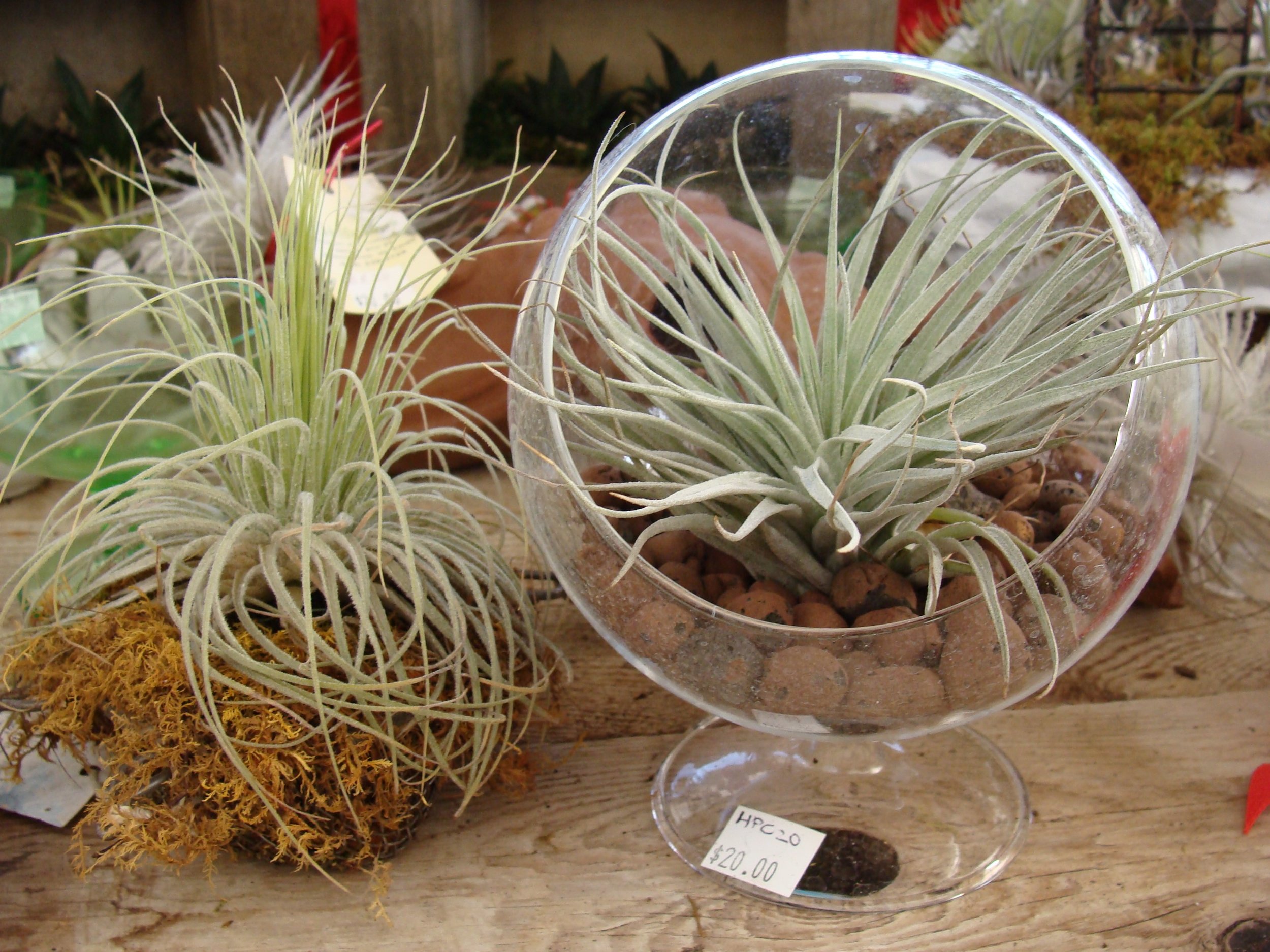Tillandsia (Air Plants)
Tillandsia plants are epiphytes and need no soil because water and nutrients are absorbed through the leaves. The roots are used as anchors only. They are sensitive to frost and are used as an indoor plant in our area. Reproduction is by seeds or by offsets called "pups". A single plant could have up to a dozen pups. Tillandsias love bright, indirect sunlight. Some Tillandsia will bloom on a regular basis. In addition, it is quite common for some species to take on a different leaf color (usually changing from green to red) when about to flower. This is an indication that the plant is monocarpic (flowers once before dying) but offsets around the flowering plant will continue to thrive.
If the air is dry where you are growing Tillandsia, you will need (at minimum) to submerge the plant in water for 2-3 hours about every two weeks. Otherwise, you can use a soaking mist once or twice a week (more often in a hot, dry environment; less often in a cool, humid one). In conditions of extreme drying, and consequent moisture loss, Tillandsia cannot get replacement water from their roots like a terrestrial plant, or draw on internal reserves like a succulent. Do not water with distilled or softened water because of the salt content. Filtered water, tap water that has sat long enough for the chlorine to dissipate, or bottled water is fine. Pond water, aquarium, or rainwater is preferred if possible.
Tillandsia make great terrarium and mini garden plant choices. They are fun to grow in areas that plants needing soil cannot be grown. They are also a fun plant for children to grow.
Plant of the Week Special:
- - - - - - - - - - - - - - - - - - - - - - - - - - - - - - - - - - - - - - - - - - - - - - - - - - - - - - - - - - -
20% OFF Tillandsia Plants
Good through 1/24/18. Not good with any other sale, coupon or discount or on previous purchases. Print this page or mention offer at checkout counter.
- - - - - - - - - - - - - - - - - - - - - - - - - - - - - - - - - - - - - - - - - - - - - - - - - - - - - - - - - - -


